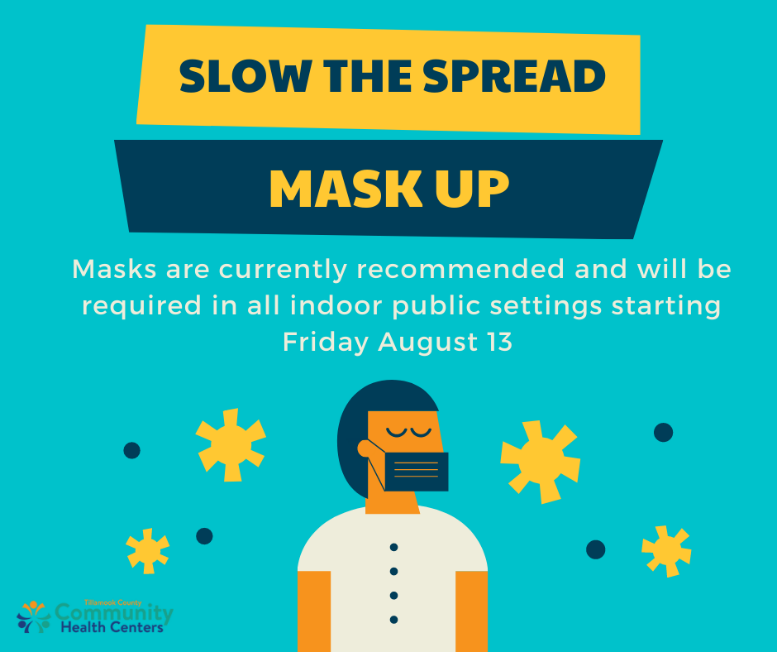EDITOR’S NOTE: There has been a lot of confusion about the OHA adopting “permanent” mask rules; these actions are necessary so that the agencies don’t have to keep updating “temporary” rules. When the public health risks have been reduced, then OHA will review the mask rules and adopt necessary changes.
Requirements for K-12 submitted Friday January 28th; rules for health care expected next week
PORTLAND, Ore. – Oregon Health Authority (OHA) filed permanent rules Friday January 28,2022 that keep in place requirements for masking indoors in K-12 schools, and requirements for school and school-based program staff to be vaccinated.
State health officials emphasized that the rule filing will maintain masking protections during the current Omicron surge. State officials are developing measures to determine when it may be safe to lift the school mask rule.
The permanent rules replace temporary rules, which are only valid for 180 days, that were set to expire on Friday.
Also expected to be filed Monday are permanent rules requiring health care workers to wear masks, and for health care workers in most health care settings to be fully vaccinated.
State health officials continue to review public comments on a proposed permanent rule that would continue, for now, the requirement that masks be worn in indoor public places. That temporary rule expires Feb. 8.
At a news conference, Dean Sidelinger, M.D., M.S.Ed., state health officer and state epidemiologist, said that while the rules are permanent, OHA can loosen or rescind them as conditions with the pandemic change, particularly with hospitalizations.
“We need to look at the number of COVID-19-positive folks in the hospital who are receiving care and the impact on the ability of the hospitals to provide care,” he said. “What we know right now is that those numbers are still increasing but are anticipated to peak soon – within the next week to week and a half – and then are anticipated to come down rather quickly.”
Sidelinger added that the drop in hospitalizations is likely to happen quicker than during the Delta surge in fall 2021, as the length of stay and the amount of critical care needed for patients is less.
“So I would anticipate, in the coming weeks to month and a half, that we will see a significant decrease in the number of people with COVID in the hospital,” he said, “and at that time it’ll be a time to start talking about ‘Can we move from a requirement for masks in indoor public spaces to a recommendation for certain populations or in certain communities where rates are higher?’”
Sidelinger also said that actions people in Oregon take over the next several weeks will be critical to ensuring the state’s hospitals have enough capacity to meet the needs of all patients needing care. That means getting primary and booster vaccines, continuing to wear masks indoors and in crowded outdoor spaces, keeping gatherings small and staying home if you are sick or if you test positive.
“It also means extending protective measures that were enacted earlier in the pandemic requiring mask wearing in schools and health care settings, and requiring vaccinations for school employees and health care workers and wearing masks in indoor settings,” he said.
Oregon administrative rules expected to be filed today with the Oregon Secretary of State’s Office:
- OAR 333-019-1015 – Masking Requirements in Schools.
- OAR 333-019-1030 – COVID-19 Vaccination Requirements for Teachers and School Staff.
Rules expected to be filed on Jan. 31 include:
- OAR 333-019-1010 – COVID-19 Vaccination Requirement for Healthcare Providers and Healthcare Staff in Healthcare Settings.
- OAR 333-019-1011 – Masking Requirements to Control COVID-19 in Health Care Settings.
Filing of the permanent rules follows a public comment period that began Dec. 10 and ended Jan. 24. Written comments were accepted, and there were three public hearings – one on Jan. 20 that covered the indoor spaces masking rule, and two on Jan. 24 for the school masking and vaccination rules, and health care settings masking and vaccination rules.
Sidelinger’s full comments can be found here. A recording of the briefing is here.


